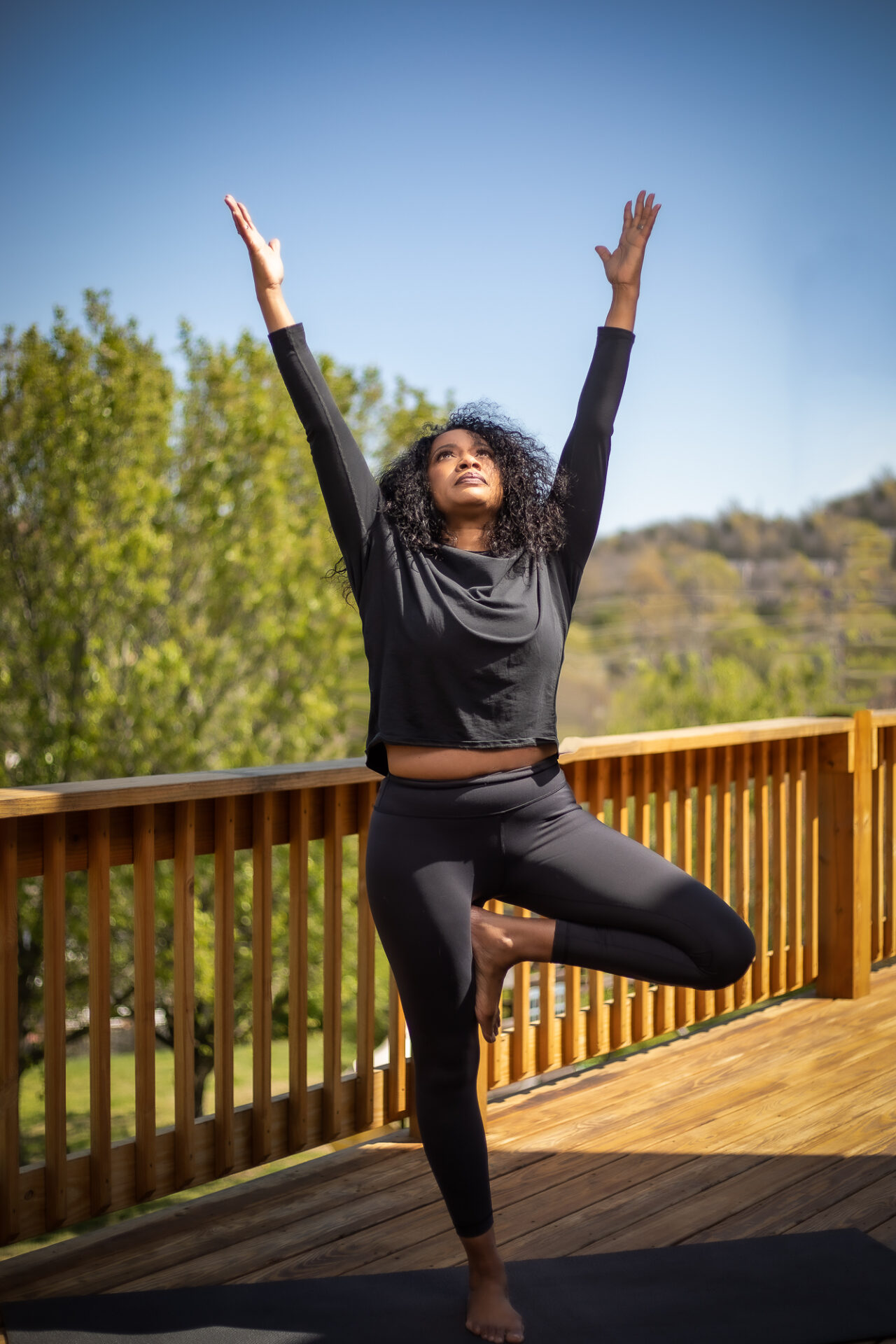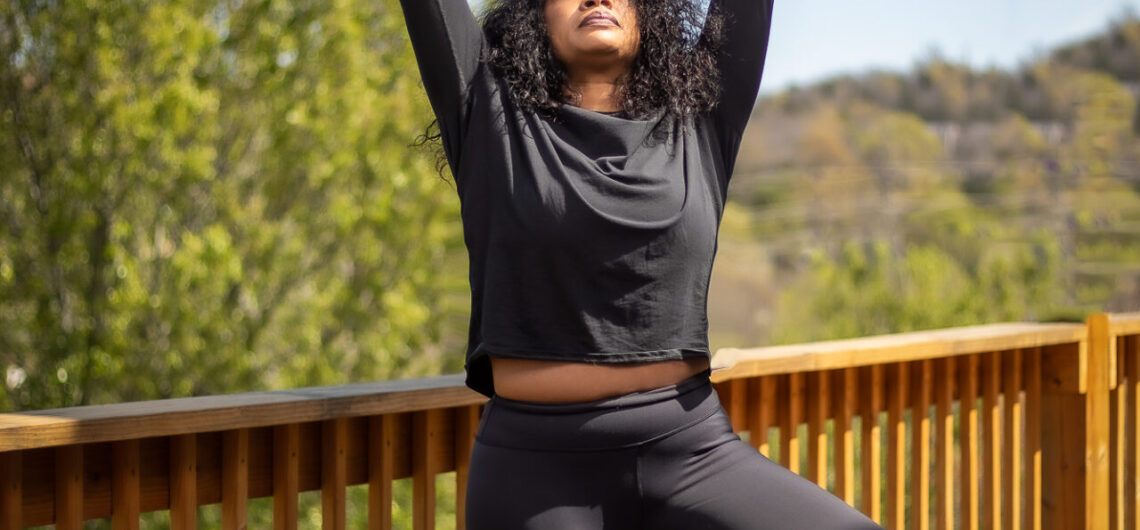
Yesterday, as I was mindlessly scrolling social media, I came across a post from a woman I know who has recently begun practicing yoga. I was so moved by her photos and heartfelt words chronicling the transformative power of this practice that I felt the need to move beyond the voyeur role that social media affords in order to encourage her to continue her journey and to possibly consider yoga teacher training. Almost immediately she responded to my post stating that it was something she had considered because of the need for more representation in the yoga community. Agreed. We need to welcome older, larger, browner, blacker, and gender fluid bodies into our yoga community and mean it this time!
I know that over my decade long yoga journey, I am often the only woman of color in the room, which is surprising when we consider the origins of this transformational practice.
Many times, I am also the oldest.
In recent years, especially in the wake of BLM, the conversation surrounding diversity, equity, and inclusion (DEI) has burgeoned, extending its tendrils into every nook and cranny of our societal framework, including the Zen haven of yoga studios. Though the practice is deeply rooted in Eastern traditions and philosophies, the modern yoga scene often exudes an aura of exclusivity, one could even say, elitism.
This elitism, which is closely intertwined with the ‘whiteness’ of wellness, is a multifaceted issue that continues to plague the yoga community. As we unfurl our mats and bend into our ‘downward-facing dogs,’ it becomes evident that the reflection staring back at us is starkly uniform—an amalgamation of bodies that are predominantly white, slender, and young. While it cannot be denied that the landscape is shifting, the question remains – how can we cultivate an environment where diversity is not just a buzzword but a living, breathing facet of our practice? How do we give honor to the people who created this practice beyond offering a trite “namaste” at the end?
At its core, the yoga community is a tapestry of narratives; stories interwoven by the quest for inner peace and the desire for wellness. However, these narratives are often shaped and dictated by those who hold more privilege within our society. The ‘whiteness’ of wellness is a phrase that encapsulates the idea that wellness spaces, including yoga studios, cater disproportionately to those who are white and of a higher socio-economic status.
This phenomenon is multifaceted, with several factors contributing to the isolation of marginalized communities. The lack of representation in media and marketing, the inherent sexualization of yoga that often caters to a specific demographic, and the historical erasure and commodification of yoga from its roots within South Asian cultures all play a role in perpetuating this exclusivity.
If I’m to be honest, there have been times when I’ve walked away from yoga studios because I didn’t feel welcome. Sure, there were signs on the door and attempts at inclusivity, but it felt formulaic and not a part of the studio’s true culture.
I believe the revolution (is that too strong of a word?) that is needed begins with a simple shift in perspective. It beckons to the community to dismantle the barriers that have been erected over time. Incorporating DEI principles is not merely a trend; it is a necessity.
To breathe new life into yoga, a conscious effort must be made to diversify the roster of yoga teachers and thought leaders. This is a critical step in ensuring that the narratives presented are reflective of the wider community. Encouraging and supporting BIPOC (Black, Indigenous, and People of Color) and trans practitioners to take the helm not only opens the door for new perspectives but also empowers groups that have historically been marginalized within Western wellness spaces.
The physical space of the yoga studio also plays an important role in reflecting the value of diversity. Studios that cater to larger bodies, provide sliding scale payment options, or are ADA accessible, and have non-gendered bathrooms, or culturally sensitive classes (e.g. all female courses for women who are unable to remove their hijabs in the presence of males) are taking tangible steps to welcome individuals who may have previously felt excluded. Furthermore, the content that is taught within these spaces should be sensitive to varying cultural and body diversities, ensuring that yoga is presented in a manner that is accessible and respectful to all.
One of my favorite symbols from yoga is the Lotus Blossom because they bloom from the murkiest of waters. In these muddy waters, the lotus becomes a beacon of light that shows us a path forward. There are many yoga studios and organizations around the country who have become these lotus blossoms. They have taken the initiative to champion the cause of diversity within their communities. By offering classes specifically geared towards BIPOC individuals, the LGBTQ+ community, seniors, particular religious groups, and larger bodies, these teachers have been able to carve out small but significant victories in the quest for inclusivity. They must be celebrated!
The road to an inclusive yoga community is a winding one, with no singular path leading the way. However, there are several actions that studios and practitioners can take to pave the way for a more diverse and equitable future.
Here are some suggestions:
- Listen to and learn from the experiences of the marginalized. Consider creating a community advisory board or implementing survey questions beyond “How was your class” so that all voices can be heard.
- Education is key. It is crucial for the yoga community to be informed about the cultures and histories from which yoga originates. Understanding the tradition allows for a more respectful and authentic practice that is free from harmful appropriation.
- Amplify the visibility of diverse yogis. Making space for these practitioners in advertisements, social media, and within studio spaces serves to normalize and celebrate diversity.
- Build partnerships with local community organizations can be a powerful way to bridge the gap. Collaborative events can help to make the practice more accessible to a wider audience.
- Speak up! If you are in a yoga space that doesn’t feel welcoming, let them know in a loving way.
The quote “Be the change you want to see in the world is often attributed to Mahatma Gandhi. The truth is that each of us holds the power to be a catalyst for change. As we roll out our mats and begin to practice, we must be mindful not only of our own bodies but of the collective body to which we belong. It is in this union, this shared breath, that the true ethos of yoga can be realized.
Join Michelle in Greece September 29-October 5, 2024 for 6 sun drenched days exploring the unspoiled island of Amorgos.




